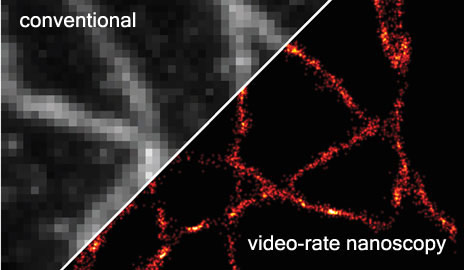
With the help of advanced scientific complementary metal-oxide semiconductor (sCMOS) cameras and innovative algorithms, researchers can now produce precise images of sub-cellular structures within milliseconds, a significant improvement from the previous timescale of minutes. Credit: Yale News
Using newly developed scientific complementary metal-oxide semiconductor (sCMOS) cameras in combination with new algorithms, scientists can now generate accurate images of sub-cellular structures in milliseconds rather than minutes.
A dream of scientists has been to visualize details of structures within our cells in real-time, a breakthrough that would greatly aid in the study of their function. However, even the best of current microscopes can take minutes to recreate images of the internal machinery of cells at a usable resolution.
Thanks to a technical tour de force, Yale University researchers can now generate accurate images of sub-cellular structures in milliseconds rather than minutes.
This image of microtubules, which act as a cellular scaffolding, was captured in just 33 milliseconds. “We can now see research come to life and tackle complex questions or conditions which require hundreds of images, something we have not been able to do before,” said Joerg Bewersdorf, assistant professor of cell biology and biomedical engineering and senior author of the research, published in the journal Nature Methods.
Reference: “Video-rate nanoscopy using sCMOS camera–specific single-molecule localization algorithms” by Fang Huang, Tobias M P Hartwich, Felix E Rivera-Molina, Yu Lin, Whitney C Duim, Jane J Long, Pradeep D Uchil, Jordan R Myers, Michelle A Baird, Walther Mothes, Michael W Davidson, Derek Toomre and Joerg Bewersdorf, 26 May 2013, Nature Methods.
DOI: 10.1038/nmeth.2488









WOW THAT IS REALY COOL